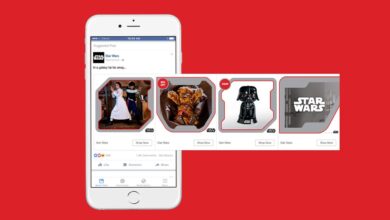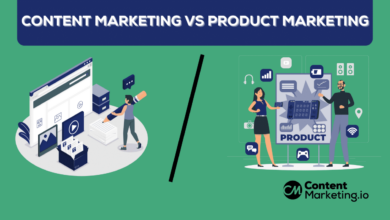
Customer Testimonials A Winning Strategy
Customer testimonials are the lifeblood of a thriving business. Starting with these crucial customer stories, we’ll explore how to gather, analyze, and use them effectively to boost trust, credibility, and ultimately, sales. We’ll delve into various methods for collecting feedback, from online forms to in-person surveys, and discuss the importance of diverse perspectives.
From crafting compelling requests to structuring a comprehensive feedback form, we’ll cover all aspects of the testimonial process. We’ll also examine how to identify key themes and sentiments, categorizing them for actionable insights. Ultimately, we’ll equip you with the tools to leverage testimonials across your marketing materials, from websites to social media, demonstrating their impactful role in shaping purchasing decisions.
Gathering Testimonials
Turning customer experiences into compelling testimonials is crucial for building trust and showcasing the value of your products or services. Positive feedback from satisfied customers can significantly influence potential buyers and solidify your brand reputation. This section delves into effective strategies for collecting and managing testimonials, ensuring they accurately reflect the diverse experiences of your customer base.
Methods for Collecting Customer Feedback
Collecting customer feedback is essential for understanding their experiences and improving your offerings. Various methods exist, each with its own advantages and limitations. Employing a mix of these approaches allows you to capture a wider range of perspectives.
- Online Forms: Using online forms for collecting customer feedback is a highly accessible and efficient method. These forms can be embedded on your website, integrated with email marketing platforms, or hosted on dedicated feedback platforms. They can be tailored to specific aspects of the customer journey, such as product usage, customer service interactions, or overall satisfaction.
- In-Person Surveys: In-person surveys offer an opportunity for direct interaction with customers, allowing for clarification and follow-up questions. This approach is especially valuable for collecting detailed feedback in specific situations, such as after a product demonstration or service delivery. Consider the logistical constraints and the potential for interviewer bias when using this method.
- Email Questionnaires: Email questionnaires are a straightforward method for reaching a broad customer base. This method is cost-effective and allows for targeted inquiries about specific aspects of the customer experience. Ensure the questionnaire is concise and easily understood to encourage responses.
Compelling Testimonial Request Wording
Crafting effective requests is key to encouraging customers to share their experiences. Clear, concise language and a genuine desire to understand customer perspectives are crucial elements.
- Example 1 (Direct and Concise): “We’d love to hear about your experience with [product/service]. Would you be willing to share your thoughts in a short testimonial? Your feedback is valuable to us and helps us improve.”
- Example 2 (Highlighting Benefits): “Share your experience with [product/service] and help us inspire others. A short testimonial about your experience would be invaluable in showcasing the value of [product/service] to potential customers. We appreciate your willingness to share your thoughts!”
- Example 3 (Building a Community): “Join our community of satisfied [product/service] users! Share your experience with us and help us build a positive and supportive community. We’re eager to hear your thoughts!”
Encouraging Customers to Leave Testimonials
Several strategies can increase the likelihood of customers leaving testimonials. A well-designed system, coupled with genuine appreciation for customer input, can significantly improve the response rate.
- Follow Up Promptly: Following up with a thank-you message and a concise summary of the feedback process is crucial for demonstrating appreciation and reinforcing the value of their input.
- Incentivize Participation: Consider offering small incentives, such as discounts or exclusive access, to encourage participation. A reward system can motivate customers to share their experiences.
- Showcase Existing Testimonials: Publicly displaying existing testimonials can motivate other customers to share their experiences. Highlighting successful outcomes is a powerful motivator.
Customer Feedback Form Template
A well-structured feedback form ensures consistent and comprehensive data collection.
| Field | Description |
|---|---|
| Customer Name (Optional) | Collects the customer’s name for identification purposes. |
| Contact Information (Optional) | Provides a way to contact the customer for follow-up or further clarification. |
| Date of Experience | Records the date of the interaction for context and tracking purposes. |
| Product/Service Used | Specifies the product or service the customer interacted with. |
| Testimonial | Provides ample space for the customer to describe their experience in detail. |
| Rating (Optional) | Allows customers to rate their experience on a scale. |
| Additional Comments (Optional) | Offers an open-ended space for further feedback. |
Importance of Diverse Testimonials
Collecting testimonials from a diverse range of customers ensures a holistic understanding of the customer experience. It avoids skewed perspectives and provides a more accurate reflection of your brand’s value proposition.
Customer testimonials are a great way to show potential clients what others are saying about your services. We’ve seen firsthand how powerful they can be, especially when combined with a strong online presence. Seeing how our clients have benefited from our expert AdWords management really delivers, as detailed in our case study on find expert adwords management really delivers , gives us a lot of confidence in our work.
Ultimately, positive feedback from satisfied customers is the best validation for our approach.
- Different demographics: Representing different age groups, genders, locations, and socioeconomic backgrounds will enhance the relevance of your testimonials.
- Varied needs and motivations: Incorporating diverse customer needs and motivations will create a more complete picture of your target audience.
- Positive and negative feedback: Including both positive and negative testimonials allows for a balanced representation of your customer base.
Storing and Managing Testimonials
A well-organized system for storing and managing testimonials is essential for easy access and retrieval.
- Database Management: A dedicated database or spreadsheet allows for structured storage and retrieval of testimonial data. This format facilitates sorting and searching.
- Categorization: Categorizing testimonials based on product, service, or customer segment allows for targeted retrieval and analysis.
- Secure Storage: Protecting sensitive customer data is crucial. Employ secure storage solutions and comply with relevant privacy regulations.
Analyzing Testimonials
Unveiling the insights hidden within customer testimonials is crucial for businesses seeking to understand their customers’ experiences. A well-structured analysis process can reveal patterns, highlight strengths and weaknesses, and ultimately, guide improvements in products, services, and customer interactions. This analysis provides actionable feedback, allowing companies to tailor their offerings to better meet customer needs and expectations.A systematic approach to analyzing testimonials helps transform raw feedback into actionable intelligence.
Customer testimonials are a powerful tool, but understanding where those testimonials are coming from is key. Social listening marketing explained, like this great resource, social listening marketing explained , helps you identify what people are saying about your brand online, even outside of formal reviews. This insight allows you to refine your strategy to better connect with your audience and boost positive feedback, ultimately leading to even more valuable customer testimonials.
It moves beyond simply reading testimonials and delves into the underlying sentiments, common themes, and key aspects that shape customer perceptions. This in-depth understanding allows for targeted improvements and enhances the customer experience.
Identifying Common Themes and Sentiments
Thorough analysis starts by identifying recurring themes and sentiments expressed in the testimonials. This involves careful reading and categorization of the language used by customers, paying attention to both positive and negative feedback. Identifying these patterns allows for a clear understanding of customer preferences and pain points.
Comparing and Contrasting Analysis Approaches
Various approaches exist for analyzing customer feedback. Qualitative analysis focuses on the subjective experience, often relying on thematic analysis to identify recurring patterns in the language used. Quantitative analysis, on the other hand, uses metrics and data to measure customer satisfaction levels, often through surveys or ratings. A combination of both approaches yields a more comprehensive understanding of customer sentiment and experience.
Categorizing Testimonials by Product or Service
Organizing testimonials by product or service allows for focused analysis and improvement. This process involves sorting testimonials based on the specific product or service being discussed. For example, testimonials about a new mobile app would be grouped separately from testimonials related to customer service interactions. This targeted categorization allows for a granular understanding of customer experiences with different aspects of a business’s offerings.
Key Aspects Demonstrating Satisfaction or Dissatisfaction
Customer satisfaction or dissatisfaction is often evident in specific aspects of a testimonial. Positive testimonials often highlight ease of use, exceptional customer support, and a strong sense of value. Conversely, negative testimonials frequently point to issues like poor customer service, frustrating product features, or a lack of value proposition. Recognizing these key aspects provides concrete data points for improvement.
Common Themes from Testimonials
| Theme | Frequency | Example Quote |
|---|---|---|
| Excellent Customer Support | High | “The customer support team was incredibly helpful and resolved my issue quickly.” |
| Easy to Use Product | High | “The product is intuitive and easy to navigate, even for a beginner.” |
| Poor Product Quality | Medium | “The product broke after only a few weeks of use. Very disappointed.” |
| Long Wait Times | Medium | “Waiting on hold for customer support was frustrating and took too long.” |
| Value for Money | High | “The product’s features are worth the price and I feel like I got my money’s worth.” |
| Neutral | Low | “The product is functional, but not groundbreaking.” |
Considering Context When Interpreting Testimonials
Context is paramount when interpreting testimonials. Factors such as the customer’s prior experience, the specific circumstances surrounding the interaction, and the overall industry trends should be considered. Ignoring context can lead to inaccurate conclusions and potentially detrimental business decisions. For instance, a negative comment about a product feature might stem from a specific use case that is not representative of the broader customer base.
Using Testimonials Effectively

Testimonials are powerful tools for building trust and credibility, ultimately influencing purchasing decisions. They provide social proof, allowing potential customers to see that others have had positive experiences with your product or service. By strategically incorporating testimonials into your marketing materials, you can significantly boost your brand’s reputation and drive sales.Effective use of testimonials involves more than just including them; it’s about showcasing them in a way that resonates with your target audience.
The key is to present them authentically and in a manner that reinforces your brand’s message and values. This approach ensures testimonials are not just words on a page but compelling narratives that drive conversions.
Incorporating Testimonials into Marketing Materials
Testimonials add a human element to your marketing, helping potential customers connect with your brand on a personal level. They’re more effective than simply stating your product’s benefits; they demonstrate those benefits through real-life experiences.
Different Presentation Formats
Different mediums can be used to showcase testimonials effectively.
- Text Testimonials: These are commonly used in brochures, websites, and marketing emails. They are concise and easy to read, allowing for quick engagement. A well-written testimonial in a concise format is particularly impactful. For example, “I was amazed by the results. This product truly exceeded my expectations.” This type of testimonial effectively captures the essence of the experience.
- Video Testimonials: Video testimonials provide a more personal and engaging experience. They allow customers to see the person sharing their experience, fostering trust and connection. Consider including testimonials in short, impactful video clips on your website or social media platforms. These clips should focus on specific positive aspects of your product or service, ensuring viewers understand the value proposition quickly.
- Audio Testimonials: Audio testimonials are suitable for podcasts, radio ads, or even social media posts. They offer a more conversational and dynamic approach. For example, a testimonial recorded in a podcast setting could be particularly effective in building trust with a target audience.
Best Practices for Website Testimonials
Testimonials on your website should be easily visible and integrated seamlessly. They should also be relevant to the specific product or service featured.
- Placement on Homepage: Place a prominent testimonial on your homepage to immediately establish credibility and build trust. This initial impression is crucial in attracting and engaging potential customers.
- Integration with Product Pages: Include testimonials directly on product pages, showcasing positive experiences related to that specific product. This reinforces the value proposition and encourages purchases.
- Dedicated Testimonials Page: Create a dedicated page showcasing a wider range of testimonials. This allows customers to browse and gain a deeper understanding of your brand’s positive impact on others. This approach can help potential customers find relevant information.
Impact on Trust and Credibility
Testimonials build trust by demonstrating the value of your product or service through genuine experiences. This authenticity is key to building credibility and fostering customer confidence. When customers see others praising your brand, it increases their willingness to trust your brand and purchase your products. It’s crucial to ensure testimonials are authentic and reflect genuine experiences.
Testimonials and Purchasing Decisions
Testimonials play a significant role in influencing purchasing decisions. They act as social proof, demonstrating the product’s efficacy and value to potential buyers. Positive testimonials can alleviate concerns, build confidence, and ultimately lead to conversions. This impact is measurable and can be tracked.
Testimonial Placement on Website Pages
| Page | Testimonial Placement | Rationale |
|---|---|---|
| Homepage | Prominent placement, often near the hero section | Creates an immediate impression of trust and credibility. |
| Product Pages | Integrated directly below product descriptions | Provides social proof directly related to the product being viewed. |
| About Us Page | Featured section highlighting company values | Demonstrates customer appreciation and strengthens the brand’s identity. |
| Contact Page | Near contact forms | Adds a personal touch and further strengthens the brand’s image. |
Responding to Testimonials
Turning customer feedback into actionable insights is crucial for business growth. Testimonials, both positive and negative, offer valuable feedback that can shape your brand perception and influence future strategies. Responding thoughtfully to each testimonial builds trust and strengthens your customer relationships. This section will Artikel effective strategies for handling different types of feedback, ensuring you leverage testimonials for optimal impact.A well-managed testimonial response system shows customers you value their opinions.
This fosters a positive brand image and encourages further engagement. By carefully crafting your responses, you can transform potentially negative experiences into opportunities for improvement and highlight the positive aspects of your service.
Appropriate Responses to Positive Testimonials
Positive testimonials are goldmines of praise and validation. Responding promptly and sincerely demonstrates appreciation and strengthens customer loyalty. These responses also encourage future testimonials.
- Express gratitude for the kind words and specific details appreciated.
- Mention how the customer’s feedback is appreciated and motivates your team.
- Connect the feedback to your company’s values or mission statement to highlight alignment.
- Reiterate how you aim to consistently meet or exceed customer expectations.
Examples of thank-you messages:
- “Thank you so much for your wonderful review! We’re thrilled to hear you enjoyed your recent experience with us. Your positive feedback regarding the helpful staff is particularly encouraging, and we’re committed to ensuring all our team members continue to provide excellent service.”
- “We’re overjoyed to receive such positive feedback! We truly appreciate you taking the time to share your experience with our product. We’re proud of the quality of our products, and your comments about the reliability are especially encouraging.”
Strategies for Addressing Negative Feedback, Customer testimonials
Negative feedback, while sometimes challenging, presents opportunities for improvement. Responding thoughtfully and constructively can transform a negative experience into a chance to show customers you care about their satisfaction.
- Acknowledge the customer’s feedback promptly and apologize for any inconvenience.
- Actively listen to the customer’s concerns, avoiding interrupting or arguing.
- Offer a sincere apology and assure the customer you’re taking their feedback seriously.
- Propose a solution or course of action to address the issue, demonstrating a willingness to rectify the situation.
- Follow up with the customer to ensure the issue has been resolved and express your continued commitment to their satisfaction.
Examples:
- “Dear [Customer Name], Thank you for reaching out and sharing your experience. We sincerely apologize for the issue you encountered with the delivery. We are actively investigating the matter and will implement measures to prevent similar incidents in the future. We’d appreciate it if you could provide us with some further details on what happened so we can improve our processes.
Customer testimonials are crucial for building trust and showcasing product success. They’re social proof that speaks volumes. But how can you amplify that positive buzz? Leveraging micro influencer marketing explained, like strategies on micro influencer marketing explained , can help. By partnering with smaller, authentic voices, you can reach a highly engaged audience who trust their recommendations.
This, in turn, significantly boosts the impact of those customer testimonials.
We’re committed to your satisfaction and are available to discuss this further.”
- “Dear [Customer Name], Thank you for bringing this to our attention. We are sorry to hear about the issues you faced with the product. We value your feedback and are working to improve our product quality. We’ve already initiated a quality check and will be contacting you within 48 hours to discuss next steps and ensure your satisfaction.”
Testimonial Tracking and Acknowledgment
Implementing a system for tracking and responding to testimonials ensures timely and appropriate responses. This helps to ensure a positive customer experience and maintains a consistent brand image.
- Establish a dedicated platform for gathering and organizing testimonials.
- Develop a clear process for categorizing and prioritizing testimonials.
- Create a system for tracking responses to ensure timely follow-up.
- Implement a system to regularly review and update your response strategies based on feedback patterns.
Testimonial Variety: Customer Testimonials

Adding diverse testimonials elevates your brand’s authenticity and resonates with a broader audience. Testimonials aren’t just about praising your product; they’re a window into your customers’ experiences. Presenting a range of testimonials, from concise quotes to detailed stories and engaging videos, can make a significant impact.Effective use of testimonials involves more than just collecting positive feedback. A varied approach, encompassing different perspectives and formats, helps build trust and credibility.
This section delves into the nuances of testimonial variety, showcasing how to use different types and sources to enhance your brand narrative.
Different Testimonial Types
Testimonials come in various forms, each offering unique benefits. Short quotes are impactful for quick snippets of praise, while full stories provide in-depth insights into the customer journey. Videos offer an even more engaging way to showcase customer experiences, allowing for visual storytelling and emotional connection.
- Short Quotes:
- Full Stories:
- Video Testimonials:
These concise statements are ideal for social media posts or website banners. They are easily digestible and create a sense of quick, positive feedback. For example:
“Your product exceeded my expectations!”
These testimonials provide detailed narratives, highlighting the customer’s problem, the product’s solution, and the positive outcome. They are more effective for showcasing the impact of your product or service. For example:
“I was struggling to manage my time effectively until I discovered your time management software. Now, I’m more organized, and my productivity has soared.”
Video testimonials offer a powerful way to connect with your audience. They allow customers to express their experiences in their own words, creating a more personal and engaging experience. This can include a customer expressing enthusiasm about a product, explaining how it solved a problem, or showing their experience using the product in a relatable scenario.
Benefits of Diverse Testimonials
Including testimonials from different demographics and backgrounds enhances relatability and trustworthiness. Incorporating testimonials in multiple languages shows inclusivity and broad appeal. A diverse range of voices demonstrates that your product or service caters to various needs and preferences.
- Demographic Diversity:
- Multilingual Testimonials:
- Variety in Tone:
Including testimonials from different age groups, genders, and ethnicities showcases that your product appeals to a wide range of people. This diversity helps potential customers see themselves reflected in your customer base.
Testimonials in multiple languages demonstrate inclusivity and appeal to a broader audience. This can significantly impact international markets and demonstrate that your brand is committed to serving a global clientele.
A mix of positive and slightly more critical testimonials can create a more realistic impression. Honest reviews, even with some constructive feedback, can show your brand is responsive and values customer input.
Using Testimonials from Various Sources
Testimonials can be gathered from various channels, including social media platforms, review sites, and direct customer feedback. Each source offers unique advantages.
- Social Media:
- Review Sites:
- Direct Customer Feedback:
Social media platforms like Twitter, Instagram, and Facebook often feature positive customer reviews. These can be easily integrated into your website or marketing materials.
Sites like Yelp and Google My Business offer valuable customer feedback. Collecting and highlighting these reviews can demonstrate the positive experiences of your brand.
Requesting testimonials directly from satisfied customers can result in more personal and authentic stories.
Alignment with Brand Image
Testimonials should align with your brand’s values and personality. A luxury brand, for example, should feature testimonials that reflect sophistication and high standards. A casual brand will likely use testimonials that mirror a more relaxed and friendly tone.
- Matching Brand Voice:
- Visual Consistency:
The language and tone of your testimonials should resonate with your brand’s overall voice. A formal brand would benefit from formal testimonials, whereas a playful brand would benefit from testimonials that reflect this tone.
The visual presentation of testimonials should also align with your brand’s design elements. Colors, fonts, and layout should be consistent with your existing branding.
Visual Presentation
Visually appealing presentations enhance the impact of testimonials. Using HTML blockquotes effectively creates a professional and organized layout. Images and graphics can further enhance the visual appeal.
Example using HTML blockquote: “I’m thrilled with the service I received. Your team went above and beyond to ensure my complete satisfaction.”
Engaging Testimonials
To make testimonials more engaging, consider including details like the customer’s background, motivations, and how your product or service impacted their lives.
- Adding Context:
- Using Storytelling Techniques:
- Interactive Elements:
Elaborating on the customer’s situation before using your product helps to create a more relatable experience for the reader.
Employing storytelling techniques to engage the reader, emphasizing the customer’s journey and the impact of your product.
Incorporating interactive elements, like polls or quizzes, can encourage engagement and deeper understanding of the testimonial.
Last Recap
In conclusion, customer testimonials are a powerful asset. By strategically gathering, analyzing, and presenting them, businesses can foster trust, enhance credibility, and ultimately drive sales. We’ve explored the full spectrum, from collection to implementation, providing actionable strategies and examples to help you maximize the impact of these valuable customer voices.





